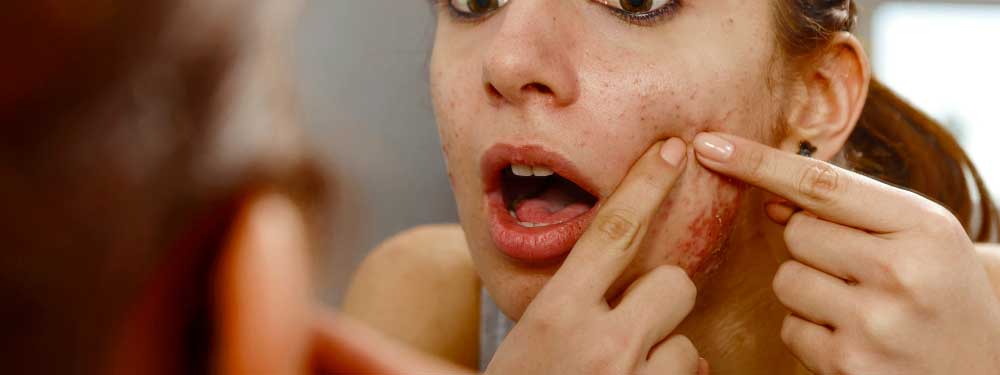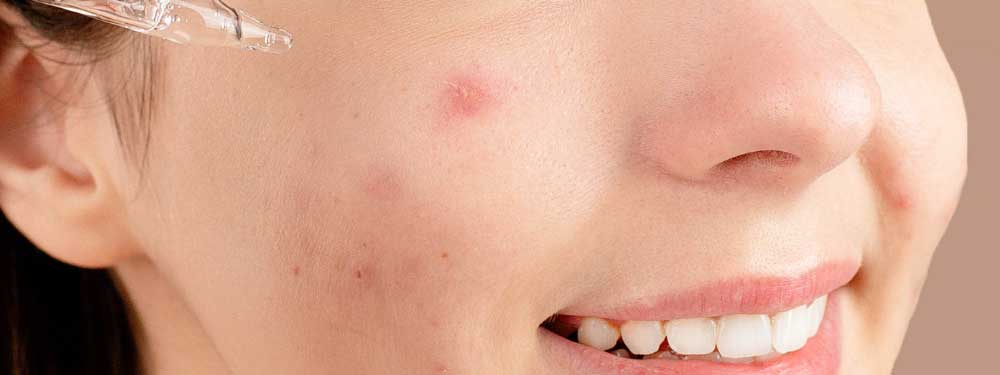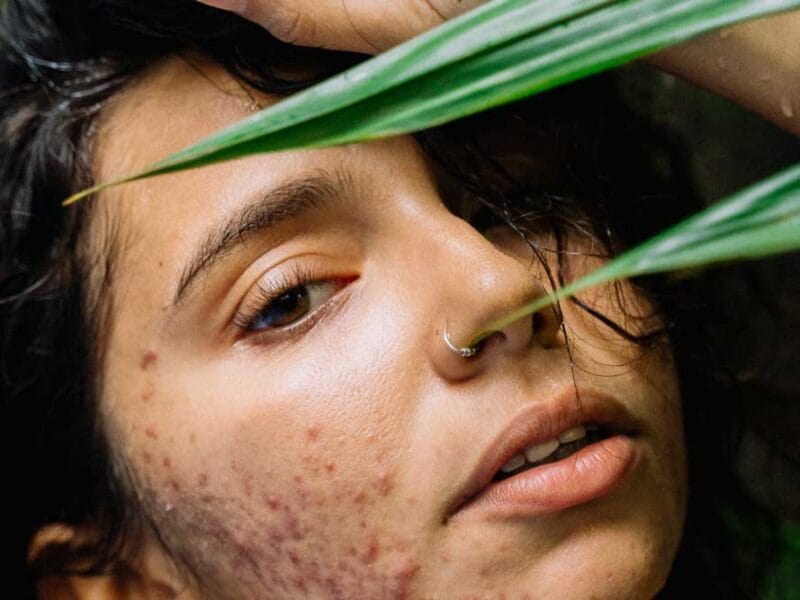If you’ve stared into a mirror lately and wondered, Why am I still getting acne? you’re far from alone.
Genetics, environment, hormonal changes, stress levels, medical conditions, and diet can lead to blemishes at any age. Some of these triggers can send sebaceous glands—the tiny organs that lubricate your skin with oil—into overdrive, clogging your pores. This buildup can then become a breeding ground for acne-causing bacteria.
While some variables aren’t always in our control, the best way of preventing adult acne is a consistent, strategic skincare routine. This is what that should look like.

Wash with a gentle facial cleanser
In the morning and at night, wash your face with a gentle, nonfoaming cleanser—because it’s less likely to strip moisture away—that contains soothing ingredients like glycerin and ceramides. This will balance and prepare the skin for targeted acne treatments.
If you have facial hair, consider rotating in a cleanser with benzoyl peroxide, a topical antibacterial, two or three nights a week to tamp down any inflamed bumps that may appear in the hair follicles.
Layer on a hydrating toner and serum
Acne is generally associated with oily skin, but sometimes dehydration is to blame. Skin, when stripped of moisture, can compensate by producing excess sebum or oil. To prevent this from occurring, layer on a lightweight toner after every cleanse followed by a more concentrated serum. Both should include hydrating ingredients such as hyaluronic acid, glycerin, vitamin E, beta glucan, and niacinamide that help reinforce the skin’s lipid barrier, its outermost protective layer.
Apply an anti-acne treatment
Active ingredients like retinoids, benzoyl peroxide, and chemical exfoliants can help reduce pimples. But it’s important to start slowly because they can also cause dryness or irritation, especially if you have sensitive skin. So, for any acne treatment, apply it once a week for two weeks before gradually increasing the frequency. Also worth noting: Use no more than one anti-acne active ingredient in the morning and at night. And if you feel a burning or stinging sensation at any point, or if your skin feels tight, you probably need to scale back.

Moisturize
Next, moisturize. Yes, even if you have oily, acne-prone skin. In this case, opt for a water-based, oil-free moisturizer. For dry or eczema-prone skin, look for one look for one with ceramides and fatty acids.
Slather on sunscreen
Acne treatments can make the skin especially sensitive to UV rays, so applying a broad-spectrum sunscreen with an SPF of at least 30 is nonnegotiable for all skin types and tones. Sunscreen can also prevent stubborn, post-blemish hyperpigmentation from getting darker.
When to see a dermatologist
If you’re not noticing improvements with over-the-counter products, think about making an appointment with a board-certified dermatologist. They may consider a wide range of topical and oral medications, including retinoids; androgen blockers or birth control pills for hormonal acne; antibiotics to reduce bacteria; or, for severe cases, isotretinoin, more commonly known as Accutane.



 Crow’s Feet and Dark Circles Are on Everyone’s Radar. Preorbital Veins Are Not, But They Should Be
Crow’s Feet and Dark Circles Are on Everyone’s Radar. Preorbital Veins Are Not, But They Should Be